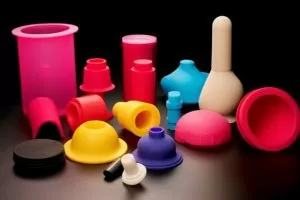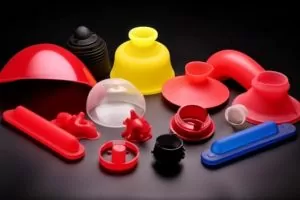In recent years, oil-resistant rubber has become an increasingly important industrial material. This is due in part to the increasing demand for oil and gas extraction, refining, and transportation operations. Oil-resistant rubbers are used in a variety of applications including seals, hoses, and gaskets.
It is important to select the correct type of oil-resistant rubber for your application to ensure optimum performance. In this blog post, we’ll explore the different types of oil-resistant rubber available and their uses. We will also discuss how to choose the correct type of oil-resistant rubber for your needs,stay tuned!

What is oil-resistant rubber and why do you need it in your life?
Oil-resistant rubber is a synthetic rubber that resists degradation when exposed to oil. This type of natural rubber is often used in applications where there is a possibility of oil leakage or spillages, such as gaskets, seals, and hoses. Oil-resistant rubber must be able to withstand the physical and chemical effects of oil exposure.
The material must maintain its elasticity and tensile strength, even under extreme temperatures and chemicals. Oil-resistant rubber is usually made from a synthetic rubber blend such as nitrile, neoprene, or styrene-butadiene rubber. These rubber materials were chosen for their oil resistance, as well as their durability and flexibility.
Oil-resistant synthetic rubbers are designed to resist oil and other petroleum products. To achieve this resistance, the rubber is made with special additives that help repel oil and other fluids.
Oil-resistant rubber is commonly used in a variety of applications including gaskets, seals, hoses, and O-rings. In many cases, it is the first choice for exposure to oils and other chemicals. While oil-resistant rubber does have its limitations, its oil ozone resistance makes it ideal for many applications.

What is the formulation design method of oil-resistant rubber?
Oil-resistant rubber is classified according to oil resistance (polar rubber): CR, NBR, HNBR, ACM, AEM, CSM, FKM, FMVQ, CO, and PUR. Oil-resistant rubber classification (non-polar rubber): NR, IR, BR, SBR, IIR, EPR, EPDM.
Fuel resistance of oil-resistant rubber: fluoro rubber FKM and fluorosilicone rubber FMVQ have the best resistance to fuel oil. Neoprene and chlorinated polyethylene rubber CPE have the worst fuel resistance.
The fuel chemical resistance of nitrile rubber increases with the content of acrylonitrile. Chlorohydrin rubber has better fuel resistance than nitrile rubber.

Resistance to mixed fuel oil of oil-resistant rubber
Fluorosilicone rubber FMVQ and fluoro rubber FKM have the best resistance to mixed fuel oil. Acrylic rubber is the least resistant to mixed fuels.
The mixed fuel resistance of nitrile rubber increases with the content of acrylonitrile. Fluorine rubber with high fluorine content has better stability than mixed fuel.
Acid oxidation fuel resistance of oil-resistant rubber: For acid oxidation fuel, the hydroperoxide in acid oxidation fuel can deteriorate the performance of vulcanized rubber, so the nitrile rubber and epichlorohydrin rubber commonly used in fuel systems are difficult to meet the long-term use requirements.
Only fluoroelastomers such as fluororubber FKM, fluorosilicone rubber FMVQ, fluorinated phosphorus cyanide, and hydrogenated nitrile rubber have better performance.
Ordinary nitrile rubber compounds cannot work for a long time in 125-degree sour gasoline.Only nitrile rubber with low sulfur-sulfur donor activated by cadmium oxide and white carbon black as the main raw rubber material can better resist acid gasoline. Increasing the content of acrylonitrile can reduce the permeability of sour gasoline.

Organic ester-resistant synthetic lubricating oil for oil-resistant rubber
There are two types of synthetic lubricants resistant to organic esters: dicarboxylates and polyol esters. Usually, choose the appropriate combination of nitrile rubber and fluorine rubber. Phosphate Ester Resistant Synthetic Lubricants for Oil Resistant Rubber:
Silicone rubber can resist phosphate ester synthetic lubricating oil, but its physical properties are very poor, and its use is limited. ‘EPDM and butyl rubber are only resistant to pure phosphate esters, if a small amount of mineral oil is mixed in, it will swell
EPDM, EPDM, and butyl rubber can work for a long time in phosphate ester synthetic lubricating oil below 121 degrees. Silicone-containing synthetic lubricating oil for oil-resistant rubber is general.
Silicone oil is not easy to cause rubber swelling, but it can extract the plasticizer in the rubber. Styrene butadiene rubber, EPDM rubber, nitrile rubber, hydrogenated nitrile rubber, and fluorine rubber that are not plasticized are resistant to silicone liquids.
Oil-resistant rubber is resistant to fluorine-containing elements, and polyperfluorohydrogen ether is a non-flammable liquid and can be used in the temperature range of 230-260.
Among the known rubbers, no one can work in this temperature range for a long time. EPDM rubber can be used in 100-degree fluorine-containing element oil. Viton can be used at a temperature of 150 degrees. Oil-resistant rubber is resistant to polyphenyl ether liquids.
Polyphenyl ethers are the most radiation-resistant liquids and are exceptionally stable to high temperatures and oxidation.

Fluorine rubber and silicone rubber have good effects and oil-resistant rubber compounding system
1. Vulcanization system of oil-resistant rubber In general, increasing the crosslink density can improve the oil resistance of vulcanized rubber.
In oxidized fuel, nitrile rubber vulcanized with peroxide or a semi-effective vulcanization system has better oil resistance than sulfur vulcanized.
The nitrile rubber vulcanized by the peroxide curing system has the best stability at 40 degrees, but it is not ideal in oxidized fuel at 125 degrees.
The nitrile rubber vulcanized with cadmium oxide and sulfur donor system has better long-term heat aging resistance in oxidized fuel oil at 125 degrees.
2. Adding carbon black and white carbon black to the filling system and plasticizer of oil-resistant rubber can improve oil resistance!
The softener should be selected from a softener that is not easy to be extracted from oil. It is best to use low molecular polymers, such as low molecular polyethylene, oxidized polyethylene, polyester plasticizers, and liquid rubber.
A softener or plasticizer with high polarity and the high molecular weight is beneficial to oil resistance.
3. The anti-aging agent of oil-resistant rubber is mainly added with an anti-aging agent that is not easy to be extracted.

Different types of oil-resistant rubber, and how to choose the type that suits you?
There are different types of oil-resistant rubber, each with its benefits and drawbacks. To choose the type of oil-resistant rubber that suits your needs, you need to consider the specific conditions under which it will be used.
For example, some types of oil-resistant rubber are more resistant to low temperatures than others. If you’re using rubber in a cold region, you’ll want to make sure you choose a type that can withstand the cold.
Likewise, if you’re using rubber in a hot area, you’ll want to make sure you choose a type that can withstand the heat.
Different types of oil-resistant rubber also have varying degrees of heat resistance to different chemicals. If you are using rubber where it will be exposed to chemicals, you need to make sure to choose a chemical-resistant type.
Finally, different types of oil-resistant rubber have varying degrees of abrasion resistance. If you’re using rubber where it’s subject to abrasion, you’ll want to make sure you choose a type that resists abrasion.
By considering the specific conditions of the use of oil-resistant rubber, you can be sure to choose the type that suits your needs.

Conclusion
Oil-resistant rubber is a valuable commodity in today’s world. Since many machines and vehicles run on oil, it is important to have a material that can withstand contact without being corroded.
At HNBR, we are proud to produce the best oil-resistant rubber on the market. Our products are designed to last even in the harshest environments.
If you need products that can stand the test, please contact us for more information about our oil-resistant types of rubber products, thank you for your attention.



